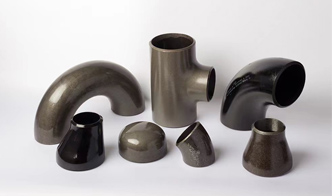Current location:
seamless alloy steel pipe
Date:2025-08-18 00:29:57 Read(143)

Understanding ASTM A106 Seamless Pipe ASTM A106 is a crucial standard widely utilized in the manufacturing of seamless carbon steel pipes for high-temperature service applications. Established by the American Society for Testing and Materials (ASTM), this standard outlines the specifications for seamless carbon steel pipes that are often used in the construction of pipelines and various pressure vessels. Overview of ASTM A106 The ASTM A106 standard primarily covers three grades of seamless carbon steel pipes Grade A, Grade B, and Grade C. Each grade corresponds to various chemical compositions and mechanical properties, which allow engineers and manufacturers to select the most suitable material for their specific operational requirements. - Grade A Primarily used for low-pressure applications. It has a carbon content of up to 0.25%, which results in a decent tensile strength, albeit less than the other higher grades. - Grade B The most commonly used grade, Grade B has a higher carbon content (ranging from 0.26% to 0.29%) that allows it to provide improved tensile strength and greater resistance to thermal and pressure variations. This grade is suitable for a variety of applications, including oil and gas pipelines and power plants. - Grade C This grade is less commonly used, but it has higher carbon content (ranging from 0.30% to 0.35%), which translates into even greater tensile strength. This characteristic makes it appropriate for extreme service environments. Applications of ASTM A106 Pipes ASTM A106 seamless pipes find extensive applications in industries that require the transportation of fluids at elevated temperatures and pressures. Some typical applications include 1. Oil and Gas Industry These pipes are essential for transporting hydrocarbons from the production point to processing facilities. Their strength and durability are crucial in withstanding the high pressures found in oil and gas transportation. 2. Power Generation In power plants, ASTM A106 pipes are employed in boiler systems, where they transport steam and other hot liquids. Their ability to endure high temperatures makes them ideal for such applications. 3. Chemical Processing Various chemical reactions occur at high temperatures, necessitating pipes capable of withstanding corrosive environments. ASTM A106 pipes are often used in this sector due to their robust chemical resistance. astm a106 seamless pipe 4. Water Transmission For industrial water lines, the seamless nature of ASTM A106 pipes helps to minimize leaks while providing the necessary water flow under pressure . Manufacturing Process The production of ASTM A106 seamless pipes involves several steps. Here’s a simplified overview of the process 1. Steel Composition The manufacturing begins with selecting the appropriate steel composition. The carbon content and alloying elements are essential for achieving the desired mechanical properties. 2. Heating The steel billets are heated to make them malleable. 3. Piercing A mandrel is inserted into the heated billets, and they are pierced to create a hollow section. 4. Elongation The hollow sections are then elongated to the desired wall thickness and length through a series of rolling processes. 5. Heat Treatment The pipes are subjected to heat treatment to relieve any internal stresses and enhance their mechanical properties. 6. Testing and Inspection Finally, the pipes undergo rigorous testing, including hydrostatic testing, to ensure they meet ASTM A106 specifications. Conclusion ASTM A106 seamless pipes play a vital role in many industries due to their exceptional strength, durability, and versatility. By adhering to the ASTM A106 standard, manufacturers ensure that their products can safely and efficiently handle high-pressure and high-temperature applications. Whether for the production of energy, the transportation of oil and gas, or in chemical processing, understanding the characteristics and applications of ASTM A106 pipes is essential for engineers and industry professionals facing modern engineering challenges. In a world where infrastructure continues to evolve and expand, these pipes remain a foundational component of reliable and efficient systems.
Share:
Previous: Flange Types
Next: Designing Efficient Bends for 5D Pipe Systems in Industrial Applications
Kind tips:The above content and pictures are compiled from the Internet and are for reference only. I hope they will be helpful to you! If there is any infringement, please contact us to delete it!
You may also like
- Exploring ANSI B16.5 Flange Standards and Their Industry Applications
- Exploring the Essentials of ANSI B16.5 Standards in Flange Design and Applications
- API 5L X65 Pipe Specifications and Applications for Oil and Gas Industry
- custom steel tube bending
- Exploring Various Methods and Techniques in Pipe Welding for Diverse Applications
- flange standard en 1092 1
- Exploring the Connections Between Different Elements in Complex Systems
- asme a333
- EN 1092 Standard for Flanges and Pipe Connections in Industrial Applications